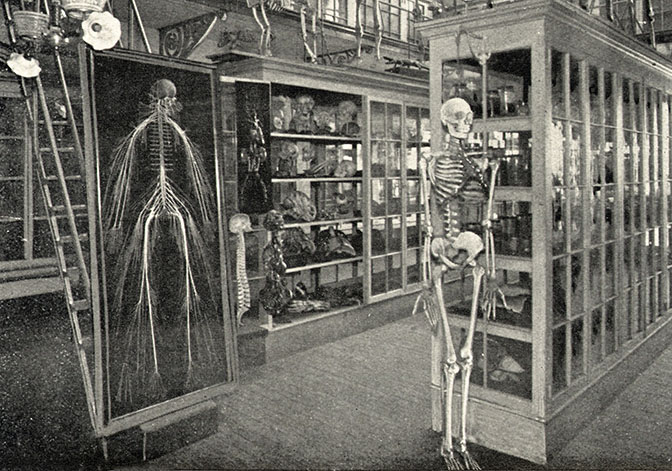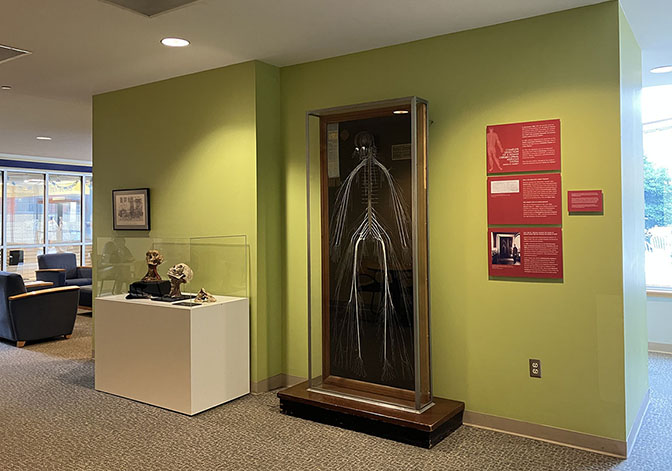Historical Human Remains
Historical Human Remains at Drexel University College of Medicine
The Legacy Center collections include historical human remains, most of which were acquired originally for medical instruction. Many of these specimens were collected when informed consent and bodily autonomy were not considered — members of the medical establishment usually followed the laws of the time, but these laws fell far short of today's ethical standards.
While these specimens were prepared for medical instruction, today they support discussion of the impact of past treatment of human remains, as well as larger issues such as health care disparities. All human remains deserve honor and respect, whether prepared specimens, dissection photographs, or a donor body in the gross anatomy lab.
On behalf of the University, we invite discussion about ethical stewardship and responsible public display of human remains. Please contact us: com_archives@drexel.edu
CONTENT WARNING: Some images currently on these pages or added in the future may be disturbing to some readers.
NOTE: These pages are a work in progress and will be updated with new information and/or questions.
University statement on the Complete Dissection of a Human Cerebrospinal Nervous System (Known as "Harriet")
 Hahnemann Medical College anatomical museum, 1893.
Hahnemann Medical College anatomical museum, 1893.
 Anatomical preparations exhibit at the Queen Lane campus, 2022.
Anatomical preparations exhibit at the Queen Lane campus, 2022.
Drexel University College of Medicine’s archival collections include a complete dissection of the human cerebrospinal nervous system, which was created by anatomist Dr. Rufus B. Weaver in 1888. At the time, this specimen was recognized as an important teaching tool in the field of neurology, and over the next century, it became known as “Harriet” throughout the medical world.
An 1888 death certificate suggests that the dissection was named after Harriet Cole, a Black woman whose unclaimed body was delivered to Hahnemann Medical College.
There are very few facts known about Harriet Cole. A century’s worth of unconfirmable stories continue to complicate the understanding of the “Harriet” specimen’s origin.
In 2018, the Drexel Legacy Center began efforts to clarify the facts about “Harriet.” This work continues today and has expanded to include the College of Medicine’s Office of Diversity, Equity and Inclusion, and the Office of Educational Affairs, as well as faculty, professional staff and students. The specimen provides an important opportunity for the discussion of ethics, health care and consent, and the exploration of how social practices change over time.
We understand that it is our responsibility to uncover why gaps and erasures in history may exist. The College of Medicine strives to address and invite conversations to recognize the influence of the past on medical education and its impact on the practice of health care today. Please feel free to contact the Drexel Legacy Center at: com_archives@drexel.edu